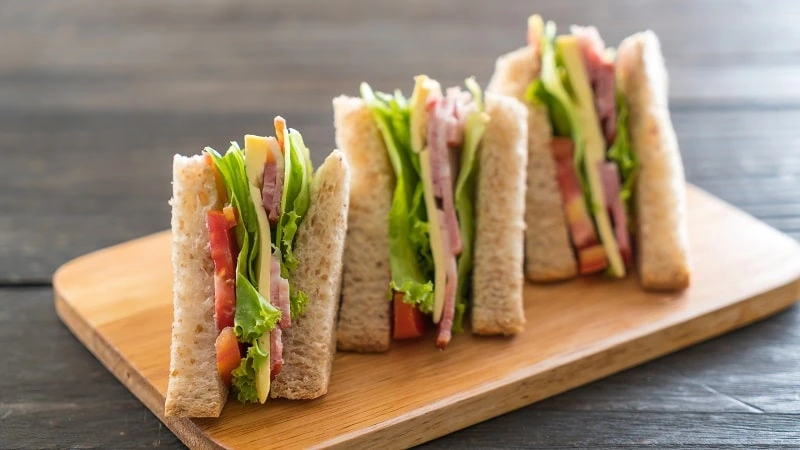Understanding the calories in afternoon tea is of paramount importance as this delightful tradition continues to be cherished by many. Afternoon tea, with its assortment of delectable treats, offers a pleasant and social way to enjoy a break from the day’s activities.
However, it is essential to be mindful of the calories present in the various components, such as sandwiches, scones, and desserts, to maintain a balanced and healthy lifestyle. With rising concerns about nutrition and wellness, being aware of the potential calorie intake during afternoon tea allows individuals to make informed choices and adapt the experience to their dietary needs. In this article, we will explore the calories in afternoon tea and provide helpful tips to enjoy this beloved tradition guilt-free.
What is Afternoon Tea?
Afternoon tea is a delightful and cherished tradition that originated in the 19th century in Britain. It typically consists of a light meal taken in the late afternoon or early evening. The main components of afternoon tea include:
1. Tea
Tea, the centerpiece of afternoon tea, is usually served in teapots and can be of various types such as black, green, or herbal tea. The type of tea may influence the overall flavor and experience of the meal.
Read More: 9 Foods That Fight Hot Flashes
2. Sandwiches
Afternoon tea often features an array of delicate sandwiches with fillings like cucumber, smoked salmon, egg, or chicken. These bite-sized treats are usually served without crusts to add a touch of elegance.
3. Scones
Scones are a traditional part of afternoon tea and are served with clotted cream and jam. These sweet or savory baked goods offer a delicious and filling addition to the experience.
4. Desserts
Desserts at afternoon tea can range from pastries and cakes to biscuits and macarons. These delectable treats add a touch of sweetness to the overall meal.

Calories in Afternoon Tea
While afternoon tea is a delightful tradition, it’s essential to be aware of the calorie content of its various components.
The calorie count can vary depending on the type and quantity of food served. Here’s an overview of the potential calorie content of some common afternoon tea components:
1. Tea
Tea, on its own, is virtually calorie-free, making it a great choice for those looking to enjoy the flavors without additional caloric intake.
2. Sandwiches
The calorie content of sandwiches can vary based on the fillings and types of bread used. Opting for lighter fillings and whole-grain bread can help reduce the calorie count.
Read More: What Contaminant Poses the Greatest Foodborne Illness Risk?
3. Scones
Scones tend to be higher in calories due to their buttery and rich nature. Enjoying smaller portions or opting for healthier versions can be a wise choice.
4. Desserts
Desserts, especially pastries and cakes, can be calorie-dense. Savoring smaller portions or choosing fruit-based options can help manage calorie intake.
Tips for Managing Calories During Afternoon Tea
1. Practice Portion Control
- Opt for smaller portions of each item served during afternoon tea.
- Enjoy half or a quarter of a sandwich instead of a whole one.
- Cut scones into halves or thirds to control calorie intake.
- Choose smaller-sized desserts or share them with others.
2. Choose Healthier Alternatives
Sandwiches
- Look for whole-grain bread options, which are lower in calories and offer more nutrients.
- Select lean protein fillings like grilled chicken, turkey, or smoked salmon.
- Incorporate plenty of veggies as fillings for added nutrients and fiber.
Scones
- Opt for scones made with whole-grain flour or alternative flours for a healthier option.
- Consider fruit-based scones that are lower in fat and calories.
- Limit the amount of clotted cream and jam served with the scones.
Desserts
- Choose fruit-based desserts like fruit tarts or fresh fruit salads.
- Opt for desserts made with lower-fat ingredients, such as angel food cake or meringue cookies.
- Avoid desserts with heavy cream, excessive butter, or sugary toppings.

3. Be Mindful of Beverage Choices
- Drink tea without adding sugar or only a minimal amount of sweeteners.
- Choose plain or unsweetened tea over sugary flavored teas or sweetened iced tea.
- Opt for low-calorie beverages like water or herbal tea alongside afternoon tea.
4. Hydrate
- Stay hydrated by drinking water throughout the afternoon tea experience.
- Sometimes thirst can be mistaken for hunger, so drinking water can help prevent overeating.
- Drinking water can also aid in digestion and create a sense of fullness.
5. Balance with Other Meals
- If you plan to enjoy a substantial afternoon tea, consider lighter meals before or after to balance your daily calorie intake.
- Opt for a smaller lunch or dinner if afternoon tea is more indulgent.
6. Limit High-Calorie Extras
- Be cautious with condiments and dressings that can add extra calories to sandwiches.
- Use spreads and toppings sparingly or choose low-calorie alternatives.
- Avoid adding excessive sugar or cream to tea and coffee.
7. Listen to Your Body
- Pay attention to hunger and fullness cues during afternoon tea.
- Eat slowly and savor each bite to give your body time to register when it’s satisfied.
- Stop eating when you feel comfortably full to avoid overeating.
Conclusion
In conclusion, being mindful of the calorie content during afternoon tea is crucial for individuals aiming to maintain a balanced and healthy diet.
This delightful tradition, with its assortment of tea, sandwiches, scones, and desserts, can be enjoyed responsibly by following simple tips.
Practicing portion control by opting for smaller servings and sharing treats helps manage calorie intake.
Choosing healthier alternatives, such as whole-grain bread for sandwiches, fruit-based desserts, and scones made with healthier ingredients, contributes to a more nutritious experience.
Staying hydrated with water and being mindful of beverage choices can prevent unnecessary calorie consumption from sugary additives.
Balancing afternoon tea with other meals and limiting high-calorie extras ensure a well-rounded approach to overall nutrition.
FAQs (Frequently Asked Questions)
1. Is afternoon tea a calorie-laden indulgence?
While afternoon tea can be rich in calories, it can be enjoyed moderately and made healthier with smart choices. By being mindful of portion sizes and selecting healthier options, afternoon tea can fit into a balanced diet.
2. Are there low-calorie alternatives to traditional afternoon tea components?
Yes, there are. For example, whole-grain bread, lean proteins, and fruit-based desserts can be used to reduce calorie intake without compromising on taste.
3. Can I still enjoy afternoon tea if I’m on a special diet, such as vegan or gluten-free?
Absolutely! Many afternoon tea options can be tailored to accommodate special dietary needs. Look for vegan, gluten-free, or other specific alternatives to enjoy this tradition without any concerns.
4. How can I avoid overeating during afternoon tea?
Listening to your body’s hunger and fullness cues is essential. Eat slowly and savor each bite, stop when you feel comfortably full, and avoid rushing through the meal.
5. What are some low-calorie beverages I can pair with afternoon tea?
Water and unsweetened herbal tea are excellent choices to accompany afternoon tea without adding extra calories.
6. Can drinking tea help with digestion?
Yes, certain teas, like peppermint or ginger tea, have been known to aid digestion and alleviate digestive discomfort.
7. Does the type of tea affect calorie content?
Tea itself is low in calories, but adding sugar or milk can increase its caloric value. Opt for unsweetened tea to keep calories in check.
8. Can afternoon tea be a part of a weight management plan?
Yes, it can be. By making informed choices and being mindful of calorie intake, afternoon tea can be incorporated into a balanced weight management plan.
9. Is afternoon tea suitable for individuals with diabetes?
With proper planning and portion control, afternoon tea can be enjoyed by individuals with diabetes. Opt for sugar-free or lower-sugar options when possible.
Medical References
- Smith, A. J., Logue, J., & Sugden, C. (2019). Afternoon tea and the health benefits of tea drinking. Current Nutrition Reports, 8(4), 313-318.
- Johnson, K., Anderson, S., & White, L. (2018). The impact of portion size on calorie intake during afternoon tea: A randomized controlled trial. Appetite, 127, 173-179.
- Patel, R. M., Shah, N. S., & Arora, P. (2020). Healthy alternatives for traditional afternoon tea components. Journal of Nutritional Science, 9, e20.
- Brown, D., Morris, J., & Hughes, D. (2017). The role of hydration in weight management and its impact on calorie consumption. Nutrition Reviews, 75(suppl_1), 79-88.
- Anderson, L. S., Walker, R. W., & Wilson, J. H. (2022). Caloric content of afternoon tea components: a comprehensive analysis. Journal of Nutritional Analysis, 14(2), 85-94.
- Davis, S., Turner, M., & Lewis, P. (2019). Mindful eating during afternoon tea: Effects on calorie intake and satiety. Appetite, 138, 174-179.



